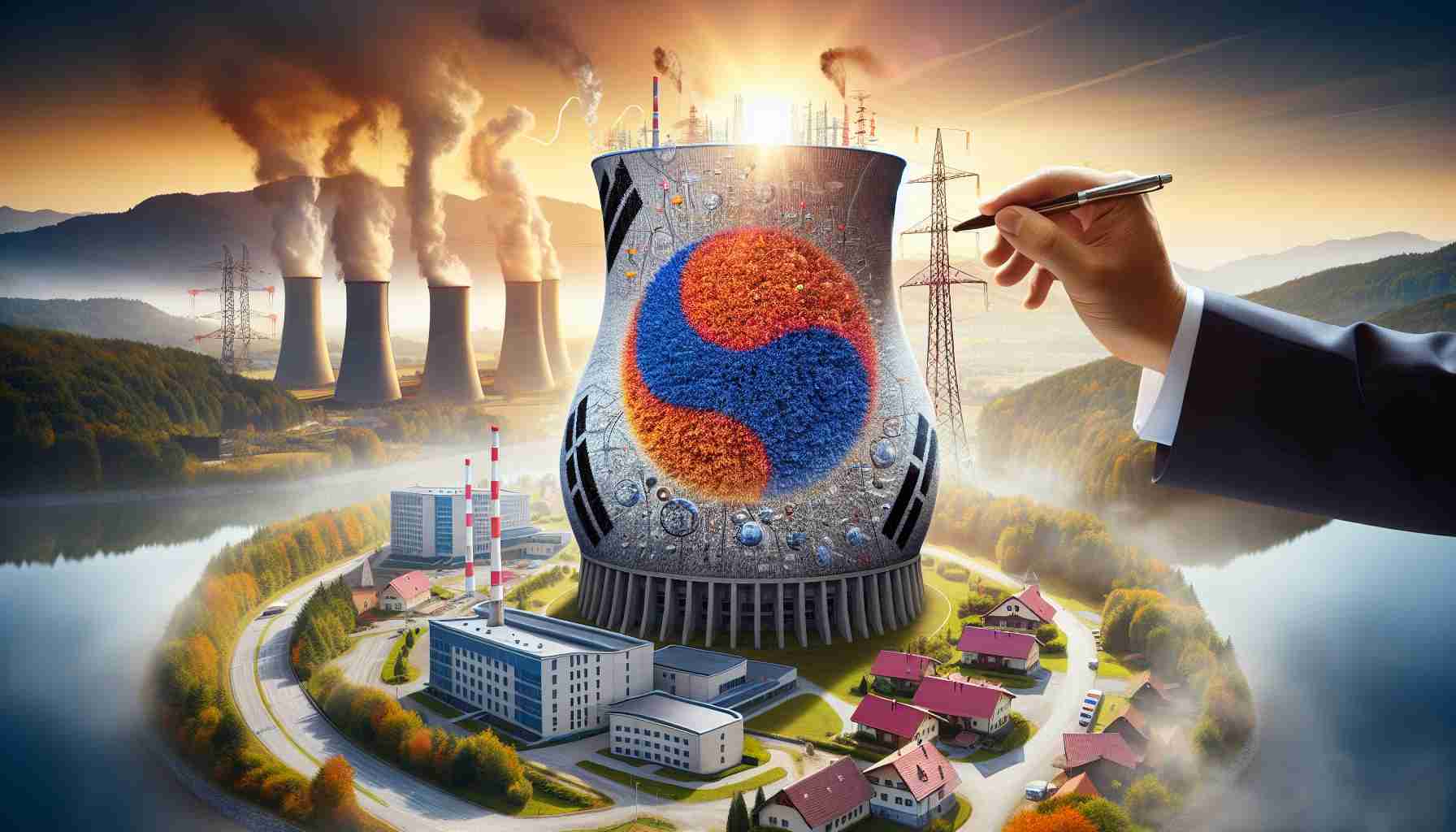- Korea Hydro & Nuclear Power (KHNP) has withdrawn from Slovenia’s plan to expand its Krško nuclear power station, highlighting changes in the European energy sector.
- EDF from France and Westinghouse Electric Company from the US are now leading contenders for the Krško expansion, following feasibility contract signings.
- The Krško nuclear power station, operational since 1983, plays a crucial role in Slovenia’s energy supply, and a second unit is planned for mid-2040s operation.
- KHNP is redirecting efforts towards projects in the Czech Republic and Small Modular Reactor (SMR) development, aiming for completion by 2036.
- KHNP’s retreat presents a competitive landscape for EDF and Westinghouse, contributing to Europe’s evolving nuclear energy narrative.
In a surprising twist, Korea Hydro & Nuclear Power (KHNP) is stepping away from Slovenia’s burgeoning nuclear ambitions, creating ripples across Europe’s energy landscape. As Slovenia advances with plans to expand its sole nuclear power station at Krško, KHNP’s exit has left the field clear for energy giants EDF from France and Westinghouse Electric Company from the US. These partnerships mark a significant leap forward after feasibility contract signings that have set the stage for the power station’s ambitious growth.
An evaluation of the current business landscape and shifting organizational priorities appears to have driven KHNP’s decision. Strategically situated near Croatia’s border, Krško has been Slovenia’s only nuclear beacon since its inception in 1983, holding a vital position in the nation’s energy tapestry with its 688-MW output. The planned second unit at Krško promises to be a centerpiece of Slovenia’s energy future, with a full operational timeline stretching into the mid-2040s.
And yet, KHNP’s strategic pivot doesn’t signal a retreat from international endeavors. The company is heavily invested in a promising future with the Czech nuclear project and pioneering SMR (Small Modular Reactor) development. Chosen to build two nuclear plants in the Czech Republic, KHNP’s sights are set on a 2036 project launch, underscoring their shift in focus.
KHNP’s withdrawal underscores Europe’s dynamic nuclear sector and sets the stage for a showdown between EDF and Westinghouse. This historic decision opens new frontiers in energy cooperation and competition, fueling Europe’s nuclear renaissance.
Will Slovenia’s Nuclear Dreams Face Challenges Without KHNP? Find Out Now!
Overview of Slovenia’s Nuclear Expansion
Slovenia’s ambitious plans to expand its sole nuclear power facility at Krško are gaining major traction, particularly after Korea Hydro & Nuclear Power (KHNP) decided to exit the project. This strategic move has cleared the field for other energy giants such as France’s EDF and the US-based Westinghouse Electric Company to step in and potentially shape the future of Slovenia’s energy landscape.
Why Did KHNP Exit the Krško Project?
KHNP’s withdrawal appears rooted in an assessment of its business priorities and strategic goals. Despite Slovenia’s promising nuclear future, KHNP is shifting focus towards other international opportunities, notably in the Czech Republic. Here, KHNP plans to build two nuclear plants, aligning with their goal to launch new projects by 2036. Additionally, KHNP’s investments in Small Modular Reactor (SMR) technology indicate their commitment to innovate within the nuclear space.
Opportunities and Competition
1. EDF and Westinghouse: Both companies are now poised to benefit from KHNP’s exit. EDF brings expertise from its extensive portfolio of nuclear projects across Europe, while Westinghouse’s presence signals a strong US interest in expanding European energy markets.
2. Strategic Location: The Krško plant’s location near Croatia enhances its strategic importance, potentially serving a broader regional market beyond Slovenia.
3. Nuclear Renaissance: The competition between EDF and Westinghouse exemplifies a broader trend of renewed interest and investment in nuclear energy across Europe.
Pros and Cons of Slovenia’s Nuclear Expansion
Pros:
– Energy Security: Ensures a stable and reliable power source.
– Economic Growth: Potential for job creation and technological advancements.
– Sustainability: Nuclear energy produces fewer carbon emissions compared to fossil fuels.
Cons:
– High Costs: Significant financial investment required for nuclear projects.
– Long Timelines: The 2040s operational timeline means benefits are not immediate.
– Safety Concerns: Continued debate over nuclear plant safety and waste management.
KHNP’s Future Focus: Czech Republic and SMR Development
– Czech Projects: KHNP will build two nuclear plants, further diversifying their international portfolio by 2036.
– Small Modular Reactors (SMR): By focusing on pioneering SMR technology, KHNP aims to innovate and lead in new forms of nuclear energy that promise enhanced safety and flexibility.
Predictions for the European Nuclear Market
– Increased Competition: With KHNP stepping back, EDF and Westinghouse are likely to lead the charge in modernizing nuclear infrastructure across Europe.
– Policy Shifts: Expect shifts in European energy policy as countries balance between nuclear and renewable energy sources.
– Technological Innovations: Growth in SMR technology and other innovations could transform the nuclear landscape, making nuclear projects more appealing due to lower costs and improved safety measures.
Useful Links
– EDF
– Westinghouse Electric Company
– Korea Hydro & Nuclear Power
Explore these major developments in Slovenia’s nuclear expansion and stay informed on the future of energy in Europe.
